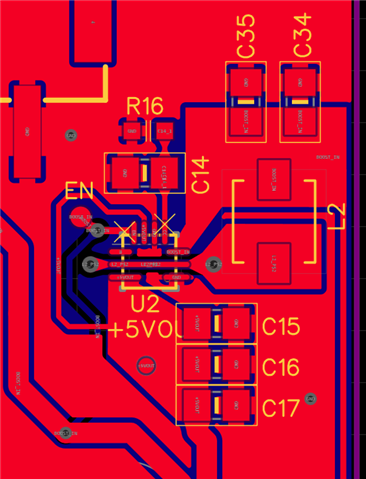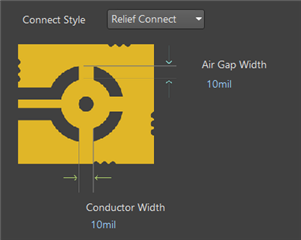Other Parts Discussed in Thread: BQ24170,
Tool/software:
We have a product that is essentially a USB battery pack - it's a large 99Wh lithium ion battery pack, charged via 5v USB using a BQ24170 charge IC.
The output is boosted from the lipo back up to 5V using a TPS61235. We've had a high number of failures in the field with these devices, around 12-15% from a sample set of around 500 so far. We test them in house extensively before they leave our facility, and have torture tested them internally beyond the boost current levels we'd typically see in the field, and had no issues. Board layout is as indicated below. When the devices are returned, 5v applied to EN no longer creates any signal or voltage on +5v out. We swap the TPS61235 on the board and normal service is restored.

C14 - .1uf
C15, C16, C17 - 22uf
C34 - 1uf
C35 - 10uf
L2 - 1uH
R16 - 33k
When scoping a normally functioning device, SW signal shape looks reasonable given my sub-optimal probes. Failed devices appear to be shorted to VDD and show battery voltage on the SW node.

What are my next steps on understanding this issue?










